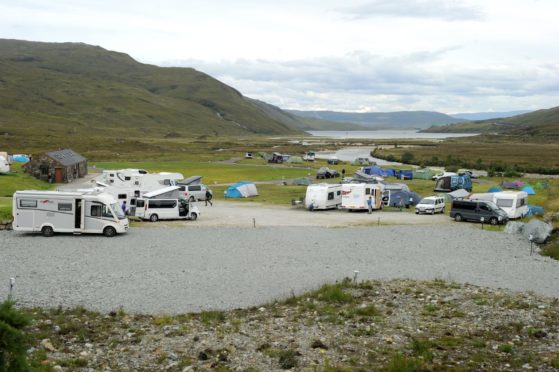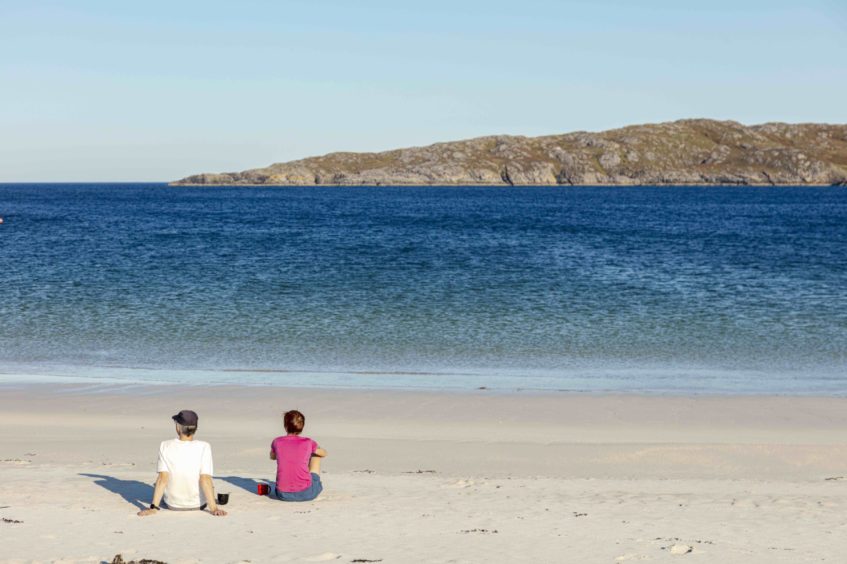North hospitality providers can expect a sea change in visitor trends this year- and it could be for the good of the sector, according to Visit Scotland regional director Chris Taylor.
With travel restrictions set to ease from Monday, Visit Scotland’s research predicts noticeable changes in behaviour by staycationers in the wake of the pandemic.
Mr Taylor told Highland councillors this week that visitors are now thinking about and planning their travel in different ways.
The length of stay is now different from pre-pandemic times, and could work to the advantage of tourist-friendly areas.
“The length of stay is increasing as understandably people are less keen to move around from night to night, and less keen on a holiday that might involve multiple locations.
“There are a lot of benefits in that, with visitors staying longer in one area, getting immersed in that area and all it has to offer.”
In a break from the traditional way of planning Highland holidays, last minute bookings are an increasing trend.
“It’s become much more last minute, where traditionally people book trips well in advance.
“Towards the tail end of last year that was getting down to an average of about six days for a booking albeit for a short trip in the local region, but still , six days is incredibly short booking.”
The self-catering sector is strong, with a lot of bookings rolled on from 2020, but hotels are slightly weaker, with towns and cities are faring less well, with “headroom” in Inverness, and the agency actively pushing the city at them moment.
An increase in road traffic will spring from people avoiding from car-sharing and public transport, Mr Taylor said, although there are early signs that train travel is picking up.
Offering value for money is crucial this year, he went on.
“Clearly the pandemic has challenged income for a lot of people, so value for money and flexibility by providers is the key.
“There will still be restrictions to capacity and opening hours and to the sort of holiday people can piece together, so they’re looking for flexibility on booking terms as they’re understandably anxious about the potential for further flare up that might mean their holiday plans need to change.”
Messages of safety and reassurance continue to be vital.
“It’s about visitors being comfortable that the hygiene factors that we all know around distancing and cleanliness, masks and one way systems are in place, and that businesses actively tell their customers what they’re doing.”
And the post-pandemic healing role of the outdoors is an important factor to recognise.
“People are looking to connect much more with landscapes and rural spaces, understandably wanting to rejuvenate, restore and re-set themselves in the Highlands, and use what we have as a way of taking stock on last year, with has been pretty traumatic for a lot of people.”
All this presents opportunities and challenges for the industry, Mr Taylor said.
He cited 17 Highland projects funded by the Rural Tourism Infrastructure Fund as making a real difference, particularly in tackling issues in Skye at the Fairy Pools, Storr and Quiraing.
Acknowledging the challenges faced by many communities last year with an onslaught of first-time campers and staycationers, Visit Scotland is running a responsible tourism campaign.
Mr Taylor said: “What we’re seeing over the last few years are people new to the Highlands who are not as aware of the issues we’re all familiar with around outdoor access and what our rights to responsible access are.
“We’re looking at licensing, enforcement and outdoor access legislation to make sure it is fit for purpose.
“We’re making sure that we’ve got a clear and consistent set of messages to visitors, so that visit Scotland, the police, local authorities, NatureScot and other land managers are all seeing a consistent thing about fires, or dogs on leads or access or wild camping so we get the messages straight and simple and we’re able to push those out to the right people.”
Mr Taylor acknowledged that some are worried about how this summer might unfold.
He said: “While there’s some trepidation in some quarters, it’s also going to be a competitive landscape out there 09.25 and it’s important that Highlands are still positioned well in our UK market and with our international markets for hopefully later this year and into next year.
“We need an ‘always on’ approach to position the Highlands as a welcoming and accessible destination, with community and place at the core of it.
“We’re trying to provide as much reassurances to communities that we want to balance supply and demand, spread people around, make sure those places who are willing and keen can take visitors back, we don’t want to be promoting anywhere where there is already visitor pressure.”

